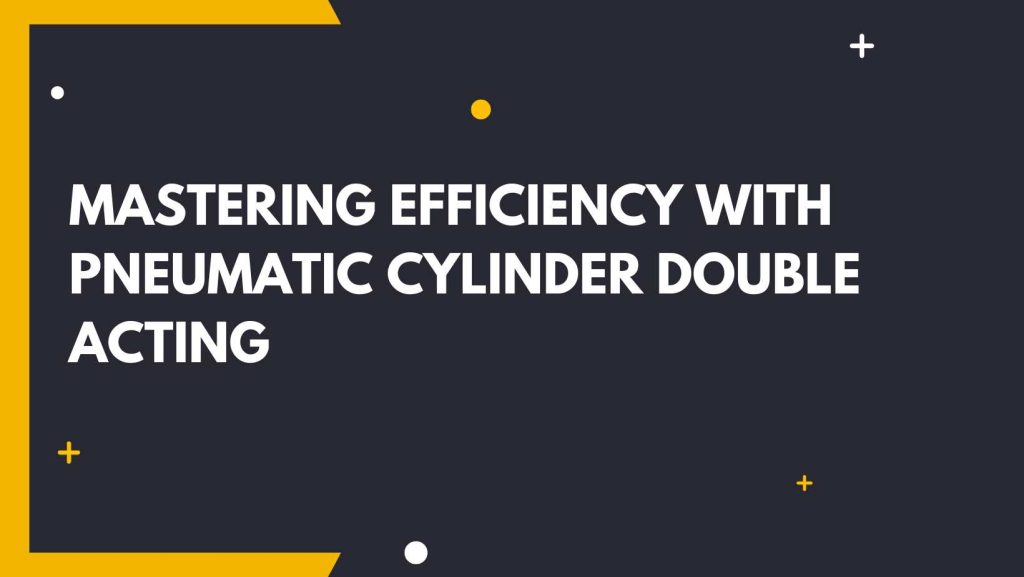- Shop all catagories
- Automated Valves
- Gauges & accessories
- Hydraulics
- Pneumatics
- Water Meters
- Manual Valves
- IBR Certified Boiler Valves
- Non IBR Boiler Valves
- Pipe Fittings & Flanges
Mastering Efficiency with Pneumatic Cylinder Double Acting

Introduction
Pneumatic systems are the backbone of numerous industries, and Pneumatic Cylinder Double Acting plays a crucial role in ensuring their efficiency. In this comprehensive guide, we will dive into the world of Pneumatic Cylinder Double Acting, understand their inner workings, explore their applications, and learn how to choose the ideal cylinder for specific pneumatic systems.
Understanding Pneumatic Cylinder Double Acting
Pneumatic Cylinder Double Acting is a fundamental component in pneumatic systems, known for their ability to perform work in both directions. These cylinders use compressed air to actuate movement, offering versatility and precision in various applications. Let’s start by getting to know these cylinders:
Top-Level Keywords
Before we delve into the details, let’s acquaint ourselves with essential terms that are central to Pneumatic Cylinder Double Acting:
- Pneumatic Cylinder Double Acting
- Pneumatic System
- Double-Acting Cylinder
- Pneumatic Automation
Applications and Use Cases
Pneumatic Cylinder Double Acting finds a wide range of applications in various industries and situations, including:
- Manufacturing: Ensuring precise movement in production lines.
- Automotive: Controlling components like brakes and clutches.
- Aerospace: Assisting in landing gear and cargo systems.
- Material Handling: Lifting, pushing, and pulling heavy loads.
- Robotics: Enabling complex movements in robotic arms.
How to Choose the Right Pneumatic Cylinder Double Acting
Selecting the right Pneumatic Cylinder Double Acting for a specific pneumatic system is crucial. Here’s a step-by-step guide to help you make the right choice:
Identify Your Needs:
- Understand the requirements of your pneumatic system.
- Consider factors like load, stroke length, and available space.
Bore Size:
- Choose a bore size that matches the force needed for your application.
- Larger bore sizes provide more power, while smaller ones offer speed and precision.
Stroke Length:
- Determine the stroke length required for your application.
- Ensure the cylinder can cover the entire range of motion.
End Fittings:
- Select appropriate end fittings for connecting the cylinder to other components.
- Consider factors like thread type and connection methods.
Conclusion
Pneumatic Cylinder Double Acting is an essential element in pneumatic systems, offering efficiency and precision in various applications. By understanding their functions and choosing the right cylinder for your specific needs, you can optimize your pneumatic systems and enhance performance. Explore the possibilities of Pneumatic Cylinder Double Acting and elevate your industrial processes to new heights.







